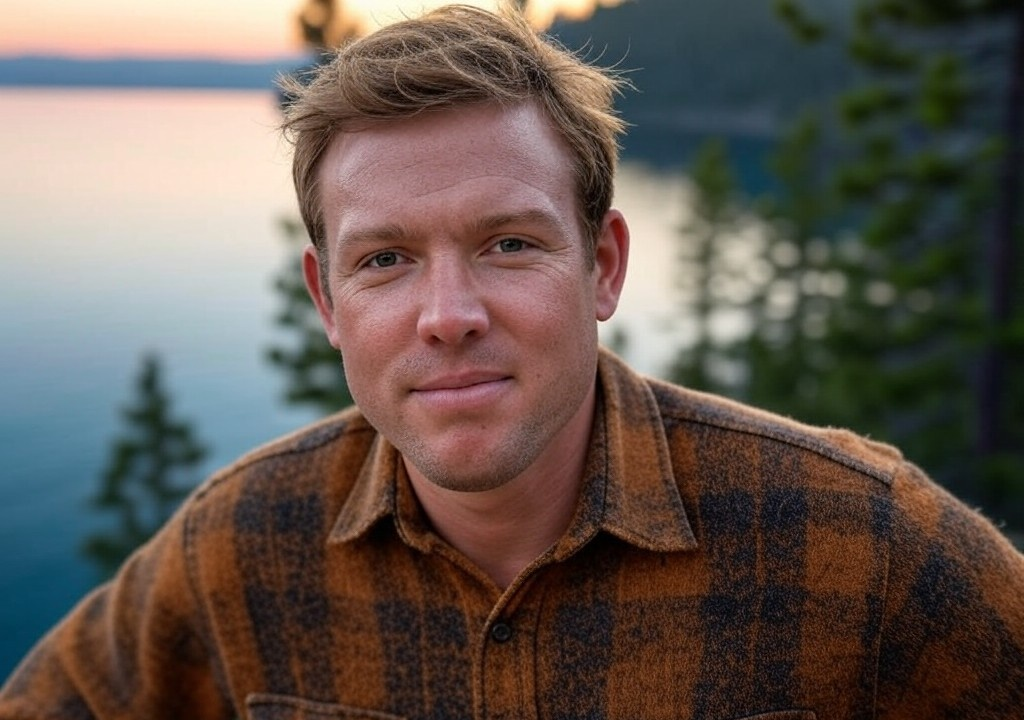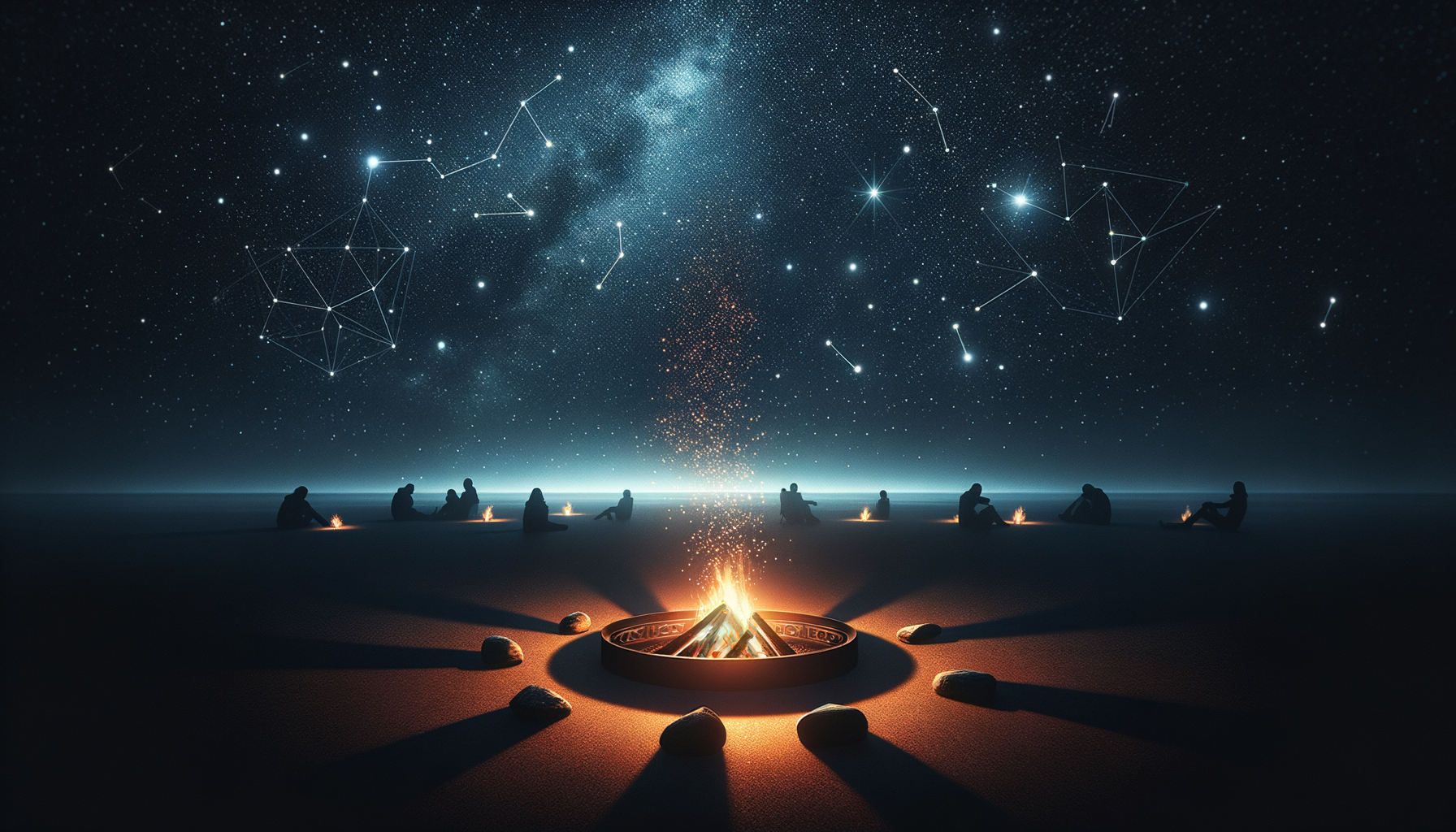The summer I turned fifteen, my parents added a firepit outside the lodge. While other teens might spend their summer finding freedom behind the wheel or sneaking into backyard pool parties, I spent mine hauling firewood, adjusting Adirondack chairs, and listening to strangers’ stories under a canopy of pines. That firepit was a magnet for travelers: honeymooners spilling secrets over s’mores, solo backpackers unraveling tales of Italian cliffsides, and once, a sunburnt accountant who claimed he faced down a bear with nothing but a harmonica (though I suspect the bear was actually a raccoon).
I wanted no part in the storytelling. I was all elbows and awkwardness at that age, content to linger in the shadows, blending into the trees. But one night—a cool, crackling July evening that smelled like pine resin and singed marshmallows—a visitor changed everything with one question:
“Hey, kid,” he said to me, nodding at the worn book tucked under my arm. “What are you reading?”
Discovering Connection in the Unlikely
What I was reading, in fact, was a weathered copy of Desert Solitaire by Edward Abbey, a book so dust-streaked and battered it might as well have crawled its way to Tahoe itself. I’d bought it for fifty cents at a rummage sale, drawn to its austere desert cover art, even though it had been ages since anyone suggested reading anything for fun. (Teen boys don’t exactly have reading circles, after all). But I wasn’t prepared to share that with some flannel-shirted stranger at a firepit.
Still, there was something in the way he asked—like the question didn’t feel invasive, just curious. I mumbled a garbled response, something like, “Uh, a desert book—it’s just this book.” Instead of dismissing me or moving on, the man—who introduced himself as Alan, some kind of wildlife photographer—grinned.
“Good choice,” he said, stretching his legs toward the flames. “Abbey gets it, doesn’t he? Weird, ornery guy, but something about his stuff makes you think the wilderness knows you better than you know yourself.”
I froze for a moment, startled. Who says stuff like that? Most people I’d met that summer wanted to talk about ski resorts or how much beet pollen was in their organic honey. But here was this guy, casually tossing out the kind of thought I hadn’t quite formed myself, though it had been bubbling under my ribs for months. He wasn’t just asking about the book in my hand—he saw something in me.
The Art of Feeling Seen
You don’t realize how much of your life you spend posturing until someone sees through it. For years I had been quiet, trying to blend into the role of affable lodge kid. Filling water pitchers for hikers. Pretending to care about fishing spots. But sitting by that fire on that specific night, someone dropped their own assumptions long enough to take an honest look at me. And you know what? It felt terrifyingly good.
Over the next hour, we talked about everything—sand dunes versus alpine ridges, the way nature makes difficult emotions feel smaller and manageable. “You’re into words,” Alan said at one point, studying me. “I can tell. You’ve got that writer streak in you. Ever thought about sharing what you see up here?”
Well, if he hadn’t pulled me apart and rebuilt me right then and there. Until that very moment, I hadn’t thought much about being a writer—I just liked stories. But Alan had named something that secretly mattered to me. And more importantly, he made me feel like it could matter, that it wasn’t stupid to care about interpreting the stillness of forests or the taste of lake breezes through pencil and paper. He saw me for who I was, not for who I pretended to be.
What It Means to Truly See Someone
Over the years, I’ve learned that those rare, deep flashes of recognition aren’t accidents—they’re made possible by two things: vulnerability and attention. Alan had been vulnerable enough to share his own quirks and curiosities (who talks about ornery authors casually?!) and attentive enough to notice mine. That combination unlocked a sense of belonging I hadn’t experienced before.
When it comes to relationships—whether they’re romantic, platonic, or even fleeting firepit encounters—those moments of being seen are everything. Instead of settling for surface-level “how-‘bout-this-weather?” banter, real recognition requires presence and care.
Think back to a moment when someone recognized a piece of you that you didn’t even realize you wanted someone to notice. The thrill of being chosen—of being understood—feels like the oxygen-rich air at the top of a Tahoe peak: absolutely vital and incredibly grounding.
Building Bridges That Count
It’s no coincidence that some of my best connections now tiptoe along these same principles. From the early stages of attraction to the steady rhythms of lasting relationships, seeing and feeling seen remains the centerpiece. These days, when I think back on that firepit moment, I credit Alan’s curiosity with influencing how I approach relationships myself. Here’s what I’ve learned:
-
Be curious, not nosy. Ask open-ended questions that invite someone to share, but respect their limits. (“What’s got you hooked on that hobby?” is miles better than “Why do you even like that weird thing?”)
-
Look for patterns, not performances. Someone might make small comments or show small actions that hint at their core values—catch them in the details, not their polished surface.
-
Name what you see. Don’t keep it to yourself when you notice something extraordinary about someone. Telling someone, “You’ve got this cool way of making people feel at ease,” or “You seem like you really get what makes forests tick,” is vulnerable and affirming.
The Lasting Impact of Being Seen
Years later, long after Alan’s words prodded me into becoming a writer, I think about him often. We didn’t exchange email addresses or stay in touch—I have no idea where he is now—but that brief, serendipitous interaction sparked a kind of inner permission in me. He didn’t change who I was (thankfully, I stayed the same overly enthusiastic tree nerd), but he did change how I viewed myself—and that shift led to everything else.
So here’s my advice, whether you’re standing by a firepit or navigating the early blush of a new romance: Be an Alan. Offer curiosity and attention freely, and watch how they light people up. And when someone—romantic partner, friend, barista—does the same for you, don’t brush it off. Let yourself marvel at it.
Because the first time you feel seen? If you’re like me, you’ll never forget it.




















